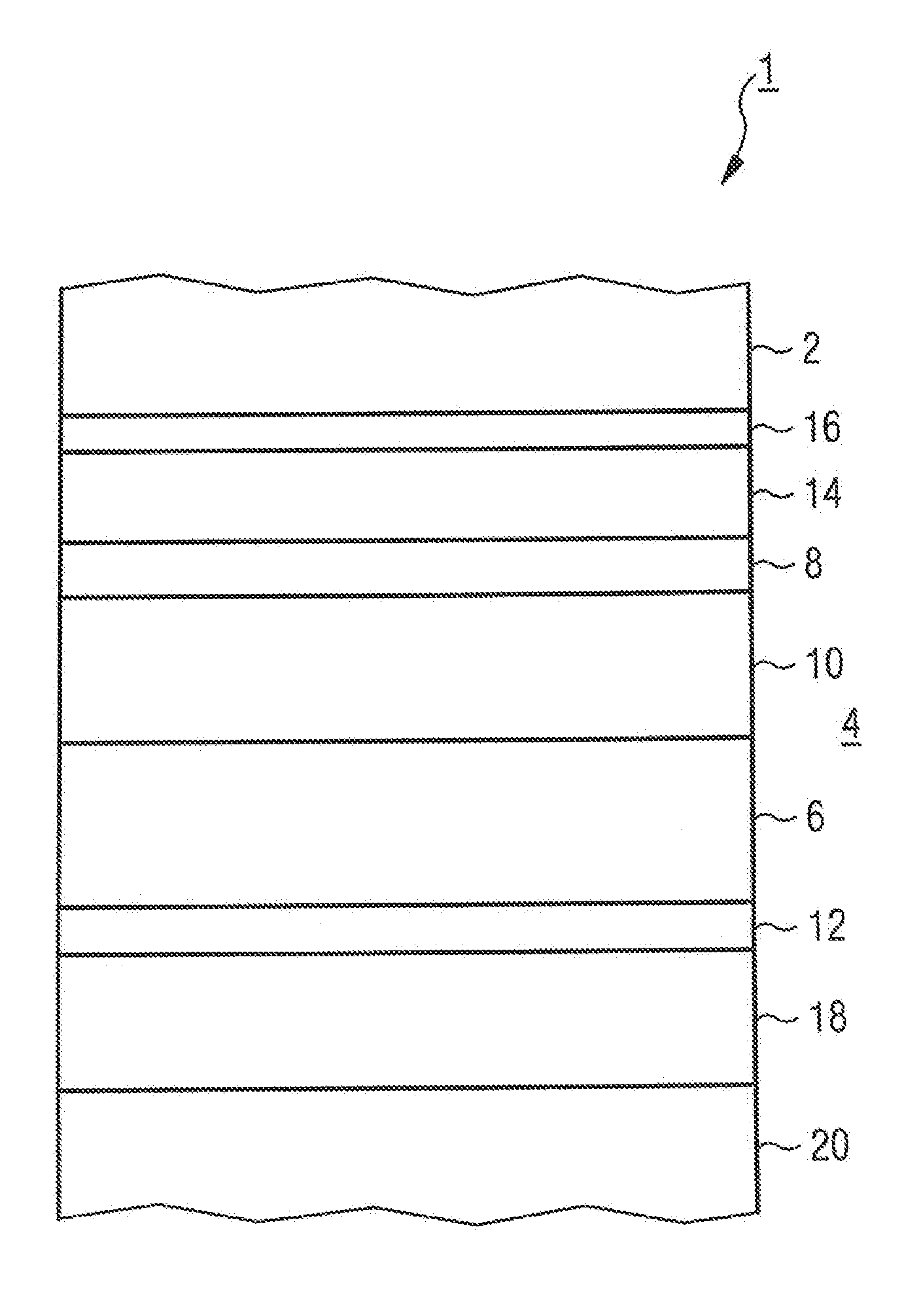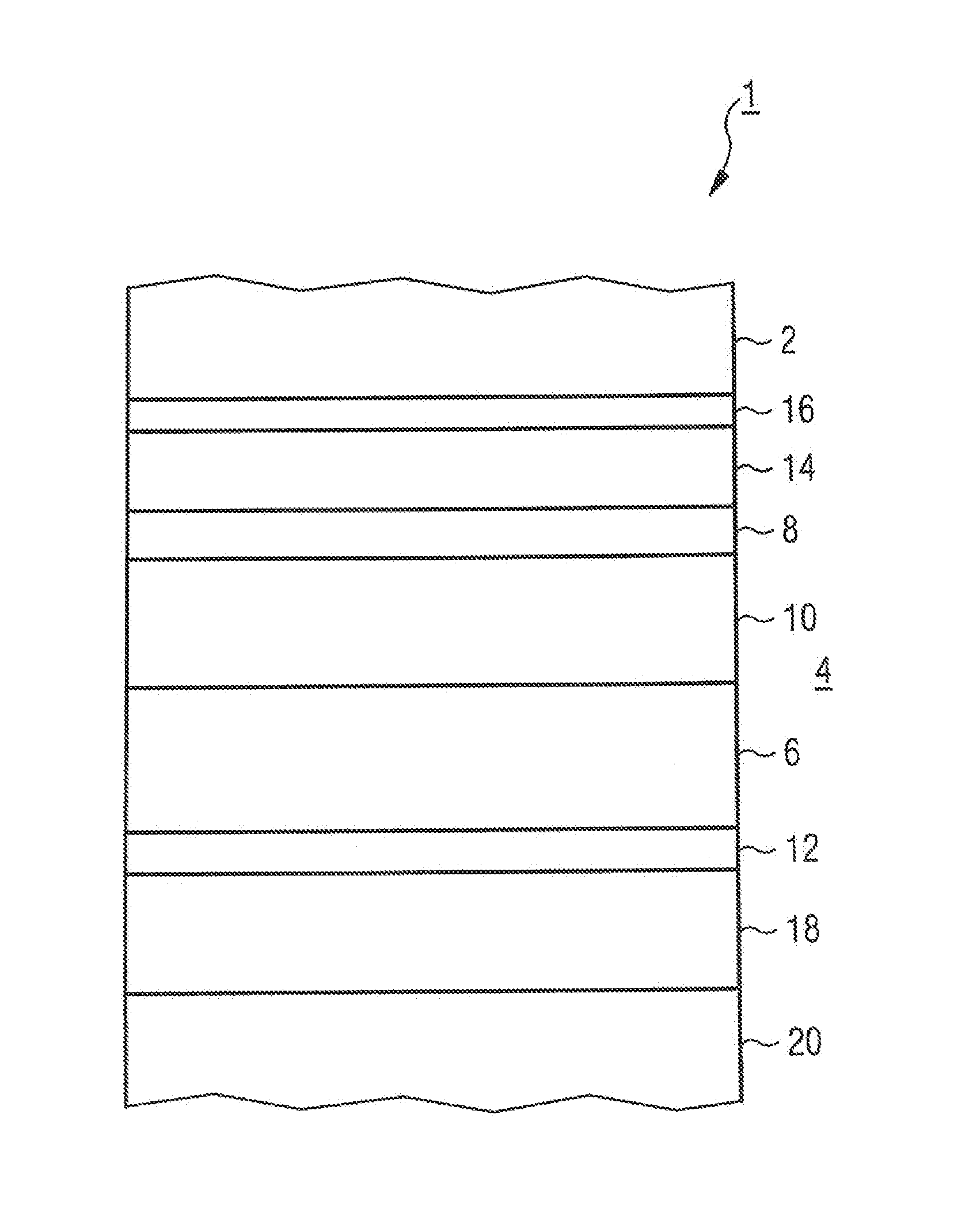Method for producing a multilayer system on a carrier, in particular in an electrochromic element
a multi-layer system and electrochromic element technology, applied in the direction of pretreatment surfaces, coatings, instruments, etc., can solve the problems of serious impairment of respective material characteristics and relatively complicated adhesion promotion concepts, and achieve simple and efficient way, high porosity, and efficient adhesion promotion
- Summary
- Abstract
- Description
- Claims
- Application Information
AI Technical Summary
Benefits of technology
Problems solved by technology
Method used
Image
Examples
Embodiment Construction
[0026] The electrochromic element 1 according to the figure is provided in particular for application in a rearview mirror of a motor vehicle, other suitable applications, such as, for example, in switchable windows, canopy tops or the like, being also possible. The electrochromic element 1 is designed in the so-called solid-state construction and comprises a multilayer system 4 applied on a transparent substrate 2. As transparent substrate 2, a substrate made of glass is provided in the exemplary embodiment. As an essential functional component for making use of the phenomenon of electrochromism for a specific variation of its optical properties, the multilayer system 4 comprises an electrochromic layer 6 designed as an electrode layer, formed of a suitably selected electrochromic material, in the exemplary embodiment, tungsten oxide (WO3). Alternatively, the electrochromic layer 6 could also be formed of another suitable electrochromic material which changes its properties of opti...
PUM
 Login to View More
Login to View More Abstract
Description
Claims
Application Information
 Login to View More
Login to View More - R&D
- Intellectual Property
- Life Sciences
- Materials
- Tech Scout
- Unparalleled Data Quality
- Higher Quality Content
- 60% Fewer Hallucinations
Browse by: Latest US Patents, China's latest patents, Technical Efficacy Thesaurus, Application Domain, Technology Topic, Popular Technical Reports.
© 2025 PatSnap. All rights reserved.Legal|Privacy policy|Modern Slavery Act Transparency Statement|Sitemap|About US| Contact US: help@patsnap.com


